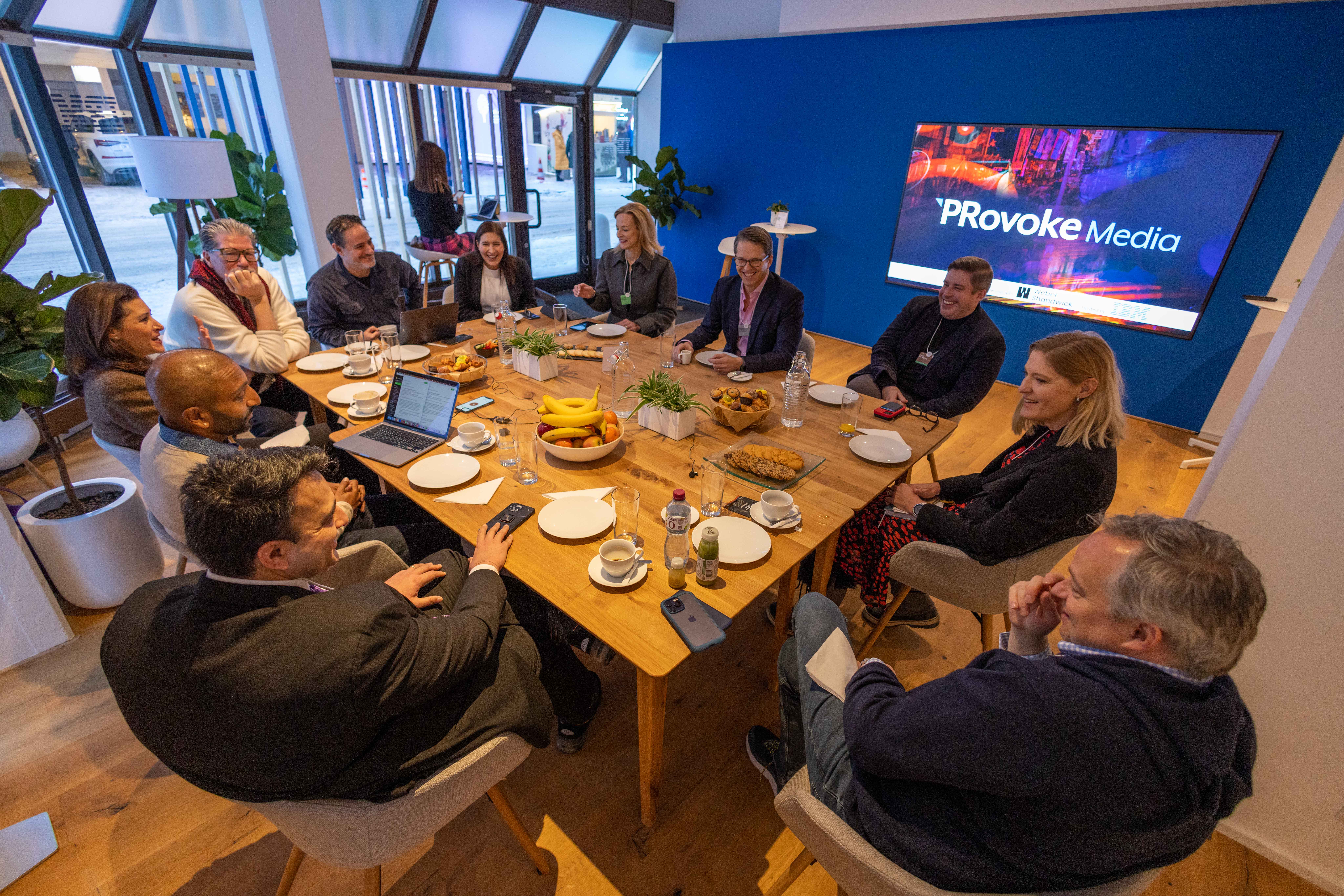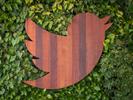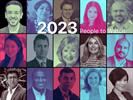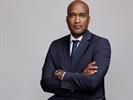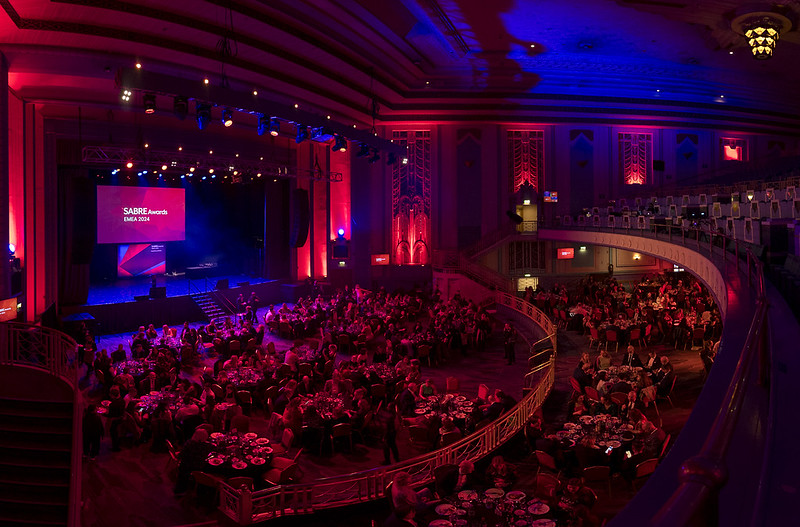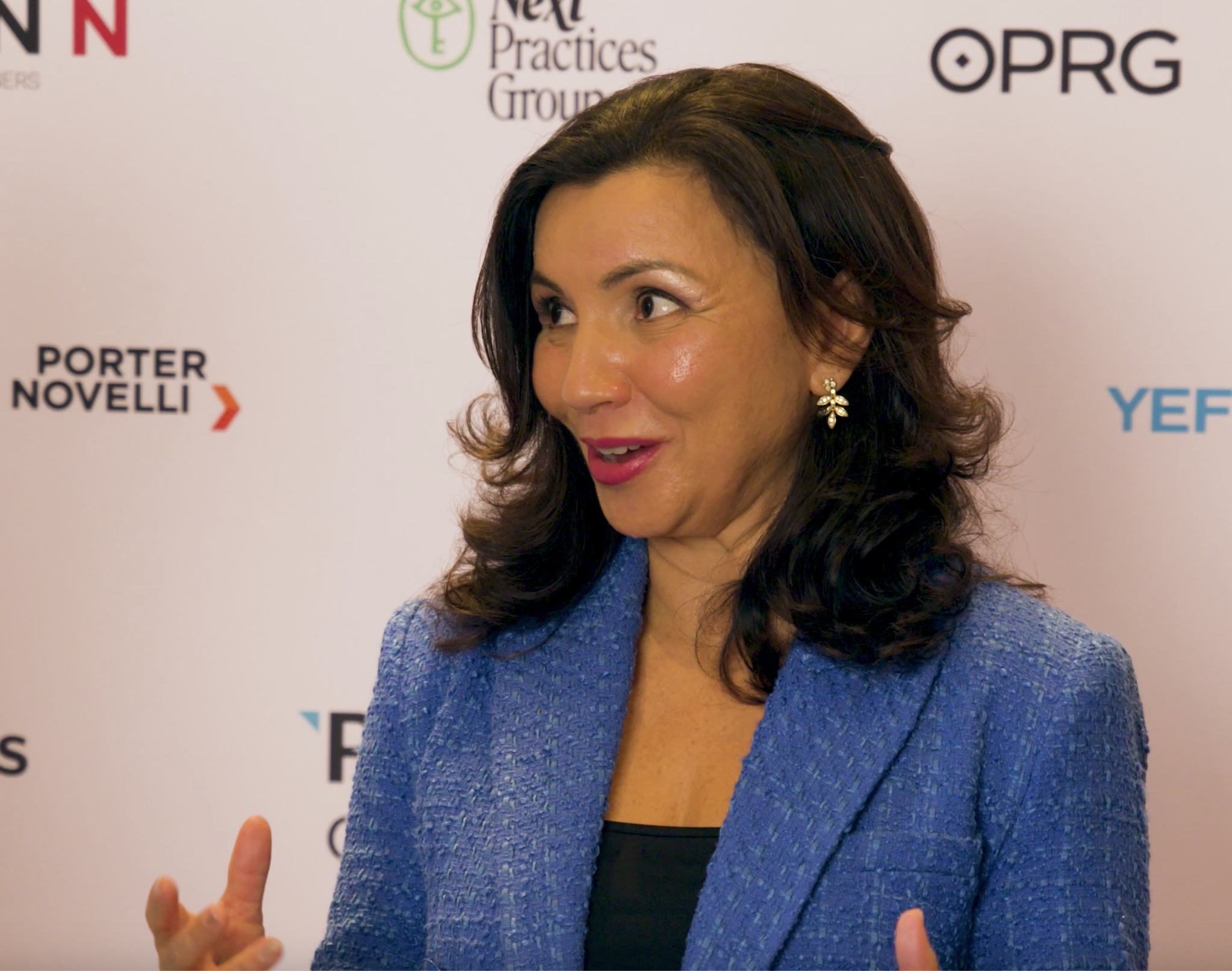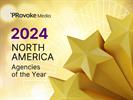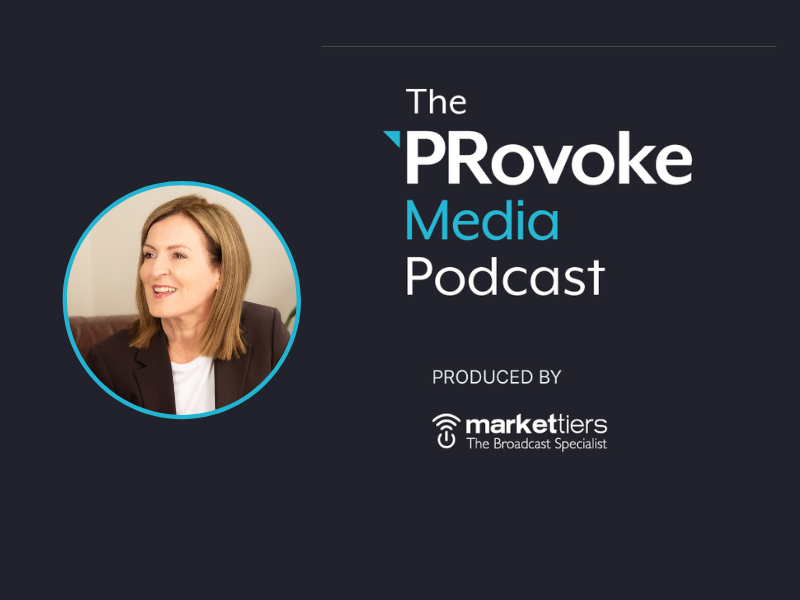Arun Sudhaman 30 Jan 2023 // 10:00AM GMT
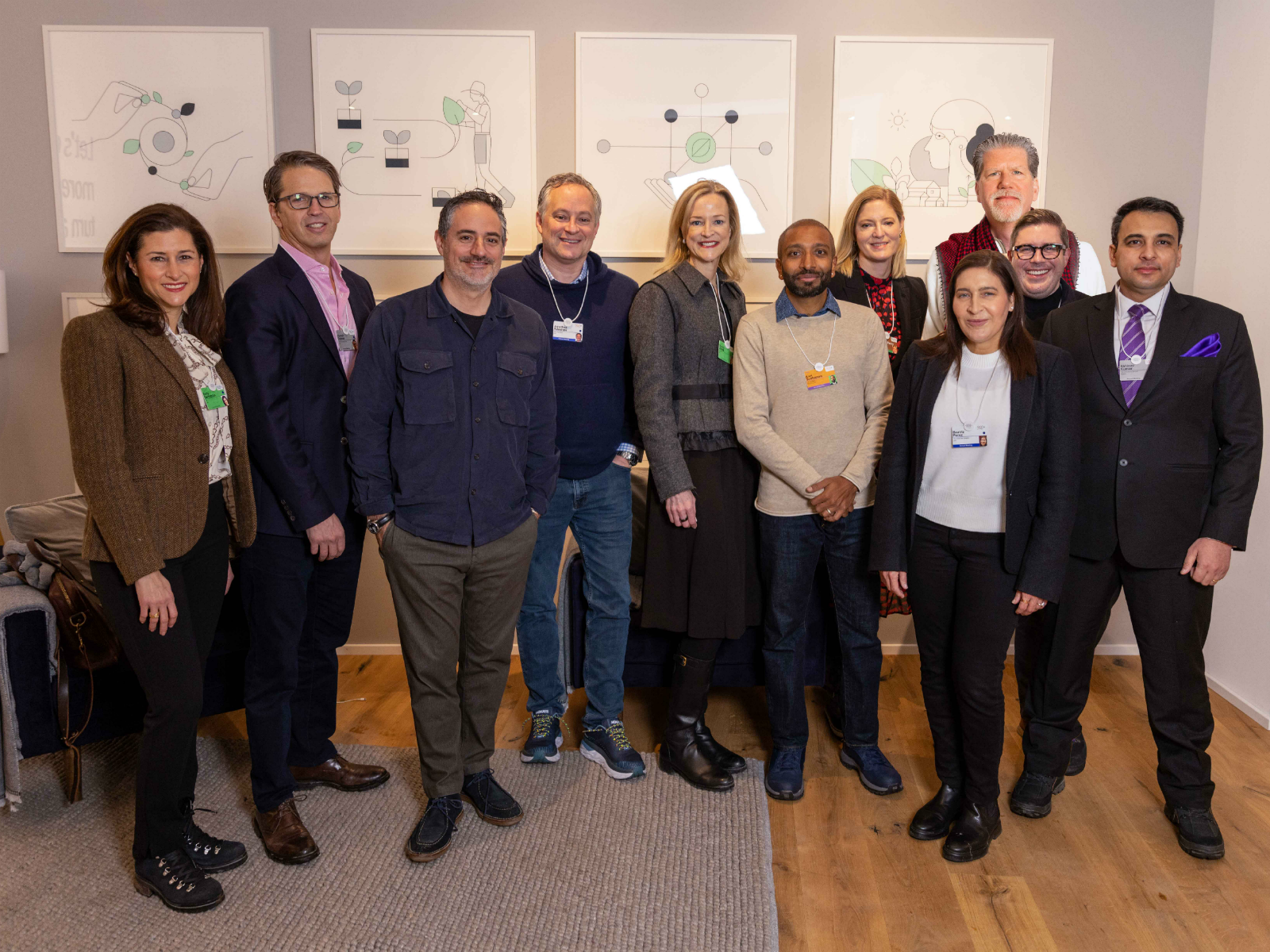
Love it or loathe it, there's no question that Davos plays an outsized role in terms of framing the issues that matter at the nexus of business, government and social progress. Stakeholder capitalism writ large, you could say, perhaps helping to explain why communications chiefs have become an increasingly conspicuous constituency at the World Economic Forum.
Indeed, when I first started attending Davos a decade ago, I was struck by how so much of the conversation spoke the language of corporate affairs, whether in terms of stakeholder engagement, corporate activism or issues management. Often, though, the people that I would deem experts on those topics — namely, communications leaders — were often relegated to a peripheral role, despite their ability to understand multiple stakeholder groups like few others within a given organisation.
And while senior communicators are still called on to police their CEOs across the frozen Alpine resort town, they have increasingly found their voice at the World Economic Forum (WEF) — to the extent that they can credibly be viewed as principals when it comes to not only shaping the Davos agenda, but determining the actions that need to follow. And that is no bad thing, given Davos' reputation for prioritising rhetoric above reality.
Much of that focus, of course, revolves around the economic and social issues that are the WEF's bread and butter, whether in terms of geopolitical threats, financial fears and technological innovation. But there is no escaping the significant implications that these trends have for the communications craft, colliding with a pivotal moment of transformation in terms of media fragmentation, disinformation and tech-fuelled disruption.
To better understand the rapid change that is underway at in-house functions, PRovoke Media partnered with Weber Shandwick to convene a panel of communications leaders from major companies across the globe, hosted by IBM. The following is an edited transcript of the 90-minute conversation, while photos from the roundtable can be found here.
Participants
- Abhinav Kumar, CMO/CCO, global markets, TCS
- Bea Perez, SVP & chief communications, sustainability and strategic partnerships officer, The Coca-Cola Company
- Brian Lott, CCO, Mubadala
- Chris Perry, chairman, futures, Weber Shandwick
- David McAlpine, global head of PR, Illumina
- Emily Garbaccio, global CMO/CCO, AIG
- Jonathan Adashek, CCO & SVP marketing/comms, IBM
- Russell Dubner, MD & senior partner, CCO, BCG
- Sarah Campbell Donia, global corporate affairs leader, Randstad
- Stacey Jones, senior MD, head of corporate comms, Accenture
- Arun Sudhaman, editor-in-chief, PRovoke Media (moderator)
The data-driven function
"This industry is on steroids right now" — Stacey Jones, Accenture
The impact of technology on communications hardly counts as a new development, but rapid advances in such areas as generative AI (ChatGPT, for example) and machine learning carry significant implications for corporate communicators. In specific terms, our panellists focused much of their attention on how best to use data and analytics, grappling with a deluge of information that does not always make their jobs easier. While the shift towards a more data-driven function has been underway for several years, it seems clear that the repercussions from more sophisticated analytics are only now being felt in a more tangible manner.
Chris Perry (CP): We’ve already seen what algorithms do to what people say. What are people going to believe? Whether it’s coming from governments or corporates and individuals. I don’t think we’ve seen anything yet. We need to be thinking in more of an 'intelligence mindset' versus a 'media mindset' to understand and use new technologies that aren’t years out. They are here right now.
Bea Perez (BP): I think what’s going to be good about this new world in technology is that we’ll have a lot more information available, we’ll have more data and facts so we can source, we can start to predict where we need to place our messages. There’s going to be a lot more opportunity to reach individuals in a way that’s more relevant and contextual to them. You still need human intelligence to look at that data and go back and verify, make sure that what is coming through the technology is legitimate. We can’t forget that human intelligence and people are equally important.
Arun Sudhaman (AS): I’m curious because both of you have alluded to something of a gap between how organisations communicate and how people are actually now absorbing media and that seems like quite a fundamental issue.
Stacey Jones (SJ): I think we obviously know data is king. We said that pretty early, it’s not a breakthrough. But I would say, in the last 18 months, we are starting to get access to more data, more platforms that actually enable more relevant, more targeted conversations. I can’t walk into a meeting and start it without data, which creates an accountability and transparency that, frankly, I couldn’t have imagined. This industry is on steroids right now and we have access to it, many of our stakeholders have access to it. The good news is that investment will come because the belief in the story, the belief in the mission and what we can deliver has never been higher.
Russell Dubner (RD): [There is] much more targeted data at the centre, more agile, but bringing our teams along on the journey because it is a very different model than I think a lot of us have dealt with in the past. People have been more comfortable saying ‘let me see’ and then ‘oh I’ll get it at the end of the month’. That’s a big shift that we can’t lose sight of.
Abhinav Kumar (AK): I think quite often the debate tends to get moved towards the extremes. Technology is fantastic for communications — look at what we can do, demographic access, new audiences etc. Or, this is just making things impossible because of fake news, misinformation etc. But the truth is technology is just a tool. It’s how you use it. I think one of the challenges our profession faces is there is cognitive overload, both in terms of dealing with the sheer amount of content which our team needs to process, deal with, react to, but also the sheer number of tools.
If you look at communications tech or marketing tech tools, they have exploded. You talk to the team, how much are you going to experiment? There are some schools which have banned [ChatGPT] but guess what? You are not going to ban progress. Same for communications. You are never going to ban the changes which are going to come about, but we need to find a way to deal with them without getting completely overloaded and burning out our teams.
Sarah Campbell Donia (SCD): I hope we all still think that communications is a craft. I worried over the past few years that we just completely go down the rabbit hole of data and forget that this is a skill which is an art. We have to train our teams to be curious. I had a very upsetting conversation last week with someone who said 'I don’t have time to learn and I have so much to do'. I said 'OK, stop right now and block two hours every week in your calendar'. It’s really important for us to continue fostering that type of behaviour. We won’t move on without it.
"If you don’t understand public reaction to what happens you get into some very risky material challenges" — Chris Perry, Weber Shandwick
Jonathan Adashek (JA): One of the things that we found is important is, what’s the framework you are applying to the data? Because you can have so much information, but unless it’s changing how we think about what we do commercially and for the corporate brand or reputation, it can just be noise. It needs to be clear enough that it can get translated for the rest of your organisation so that you can shift everyone’s mindset to tap into their creativity. Then they start thinking like communicators as well, but have a much better sense of the context that you are communicating within.
David McAlpine (DMA): I can’t come to the table without any kind of data because I am up against every other function that is extremely data-driven. I always make the joke, we are probably the least data-driven part of the organisation between sales, marketing, the rest of it. I always tell people ‘it’s just a gut feeling’ and no one really likes it. Sometimes it’s hard to sell that especially with the increasing amount of data that’s out there. People are always looking for 'where is the data behind that?' I don’t have it, but my experience tells me that this is a good idea.
We at Illumina have a very complex story to tell, and so I have to see who responds to what and who understands what. And sometimes data can’t tell that. Sometimes it does and sentiment is great, and seeing what resonates and what doesn’t is great, but I always tell my team, keep your guard in check. You guys are trained communicators, make sure you are reading the data from a human perspective too.
Brian Lott (BL): We’re struggling to unify data that’s meaningful. The challenges are multiple. They are geographic or linguistic, they are through legacy systems. How do you connect what communications is doing to deal flow? It’s very intuitive at the moment, and you can’t calculate a story that doesn’t appear, that may have been wrong or misguided from the beginning. We’re fortunate to have a CEO who gets communications intuitively, so that’s a huge advantage. But using it in a targeted way or being at a level we want to achieve, we’re just not there yet.
"There’s so much opportunity in [data], but I think there is a little bit of fear as well" — Abhinav Kumar, TCS
RD: We are talking at a very high level and I’m just curious, using data to solve what problem? My experience right now is it can be super helpful in certain steps, like the comms and marketing value chain, and another part is like it’s totally irrelevant. For the first, to prioritise and understand topics, understanding where the conversation is going and with who. Tying it back with the commercial agenda and how it rolls out is deeply integrated: where in that channel can we earn, where do we need to buy, where could we do something interesting in a partnership?
And then there’s the reputation side of things. We do an index that we draw up ourselves but that looks at where is trust. We have a multi-stakeholder view and we will look at that every quarter and then we layer in the conversations that are happening — where we see stakeholder frictions and we check on those. Those are probably the core areas that we are using data. Of course, the performance data that goes into social and into paid. That leaves a whole bunch of big gaps, but it’s a super solid place to start. One of the challenges is the lagging indicators. [They] are super helpful but they don’t necessarily tell you what are the leading indicators you need to change to drive change and alignment.
AK: One question I think we do need to ask ourselves is, this focus on data, is it progressive? Are we trying to move the profession and the craft of what we do forward, or is it in some cases defensive? Another roundtable I was part of where a participant there started talking about how they started measuring the business impact of their communications. In simple terms they said, 'we took out this press release and we were showing the business as much as possible who has consumed it, we are trying to report here’s the leads from this'. And I said that’s a really slippery slope because that’s not what this mechanism is intended for and, if you go down that road, in a sense you are competing with standard marketing campaigns which are much more effective in doing that. But what I gathered from that person was they felt they were under so much pressure to justify the existence of their department — that is why they were getting pushed into the data side of things. There’s so much opportunity in it, but I think there is a little bit of fear as well.
CP: The last three years, we have gone down the rabbit hole of disinformation. Eventually we created a partnership with a crew called Blackbird.ai. Disinformation isn’t something you just cut up and put a deck together and go talk to clients about it. To make a long story short, we spent about a year developing a system designed for people like yourselves around the table to understand different signals. It’s not sentiment and reach and a lot of things you can get through your typical systems. It’s cohorts, it’s accounts, it’s the narratives, it’s the propagation and most importantly it’s the intent.
So we are able to see in a networked visual what’s happening. Is it a big deal, is it not a big deal, what are the accounts, do we change our media lists, global opportunities, do we have to go to our CEO or our chief counsel asap? Russell, I think this is a super important question you teed up because there are so many things we can do, but right now if you don’t understand public reaction to what happens you get into some very, very risky material challenges that aren’t the kind of challenges we’ve dealt with for our 20-plus years in the business.
BP: Beyond public reaction, it’s also employees. It’s really important to understand where they are and how are they thinking about the company, and how do we portray ourselves to the public. We do have the technology and tools in place to have conversations with our employees, and it is interesting because there’s no shortage of feedback from them either, right? I think it’s actually made that relationship with the employee so much stronger.
AI anxiety & change management
"We get a little too focused and we forget the fun" — Russell Dubner, BCG
Deploying data analytics more effectively is just one example of how technology is reshaping the communications function. But the conversation soon broadened to consider the impact on employees and the use of specific tools, such as ChatGPT. It became painfully clear that, for communications leaders, one of the key challenges lies in change management, whether in terms of adding new skills, disrupting traditional modes of operation, or weeding out unproductive initiatives. From an employee engagement perspective, accordingly, there is plenty at stake.
BP: Something like a ChatGPT, we know the data sets aren’t going to be great. I played with it — let me write a press release announcing a new senior leader at Coca-Cola — it actually turned out pretty good. Then I said 'who is the senior leadership of Coke today?' They got it all wrong. We have to know the role of technology. Maybe it’s really to take the work that can be more routine off the plates of the employees, but you still need somebody to oversee that. The more critical thinking work is probably still not going to be done by that tool. Understand what is the job description of each tool in technology and how to use it, but also really listen inside, not just outside.
AK: I asked ChatGPT to write some texts on how the company differentiates itself. Honestly it’s better than what 80% of our sales force can do and maybe better than 80% of what our marketing team can do. It was really good. Today, in a sense, your employees are the verification checkpoint. Not just for us, but for our clients, also for media. Any narrative you put out, especially companies with large employee bases, you send a story to a journalist — they go ‘well let me talk to a few employees in this organisation and let’s verify it’. And one thing employees hate is defending the indefensible, right? So the internal/external part is so important to get that strongly aligned.
JA: It’s a massive shift in getting people to think about it differently, not just in the function but our clients internally. Previous places I’ve been, it’s been like a press release factory. That’s the mindset shift — it's like 'we’ve done this for the last five years and we’re continuing'.
SJ: I think that change can be really intimidating. So I think it’s incumbent upon all of us as leaders to help that change be inspiring to our colleagues and our teams and help explain this. It’s a burden because we do have to explain it and it’s not something that can be intuitive all the time.
"Sometimes the data doesn’t tell us what we need to do" — David McAlpine, Illumina
DMA: Show them there are alternative paths. For a long time I think people at my company saw press releases as a win or a check box. We’re seeing press releases are being read less and less — I use it as a tool to keep reminding media this is what we’ve done. I’ve got to remind people — with the data that we have, this isn’t the most effective way to get the news out now. We have to think creatively, we have to think beyond what we’ve done and, back to my point about the human element of it, sometimes the data doesn’t tell us what we need to do.
Sometimes we just sit around the table and say what’s the best way to tell the story and then figure it out from there but, to your point on change and inspiring people, you have to bring them along on the journey and it’s hard. It’s not easy, especially when people are so used to ‘well this is what we’ve always done and this is what our competitors always do.’ I try to remind people innovation is in our DNA, we’re trying to move the needle in a different kind of way.
SCD: With change, we also assume that there is something to go to. In my organisation, I’ve been there only 18 months, but I joined a press release factory. They are all customer stories and none of them were actually genuinely interesting narratives, they were just customer stories on a press release. So I said we are going to spend the next 18 months building the infrastructure that allows us to get one story and one narrative out there. The old ‘we will build it and they will come’ — what’s the point of measuring when you just need to build the stadium?
JA: If you really think about it, what we are measuring brings our employees, our teams along. Because that’s how they are going to get comped at the end of the year, reviewed and all that kind of stuff. I can’t tell you how many times I’ve had people come and say I’ve got to put this press release out because…I’ll get my bonus for the year.
RD: It’s not as easy as it seems. It’s easy to say it. For me, I’m lucky, the CMO and I are deeply integrated on the mindset and the work. We just created an activation and orchestration group that looks to make sure that everything that should be 360 is defined in a 360 way — the measurement, the paid is done in a way that understands the nuance of earned. It sounds like one of these silly small moves, but the difference of having that when you start reporting out across the channel sets and then people start optimising. If everyone’s in their lane, they report in their lane, it's substandard. They might win in each lane and then lose in terms of individuals you want to engage with.
Everyone ends up having more fun too. We barely think about the press release now. I push people much more [on] the idea. So the creativity part of it becomes more interesting again. To me that’s the risk in all of this, we get a little too focused and we forget the fun part of what we do is what do we conjure up? What do we conjure up with new formats, what do we conjure up in this fractured environment in terms of how we fan out? Those are the things to me that are energising about the next chapter versus the little battles that we have to fight that are a lot less fun.
CP: I think we have to address the other format that’s pervasive that needs to be broken: Powerpoint. So we have a session when DALL-E came out, and it was one of the most energised meetings I have ever come out of. We spent roughly four hours putting in prompts in the code — it’s just having fun versus ‘oh my god another thing I have to learn’ especially when we’re as busy as our teams are. So the more I think we can be in that environment, the more comfortable and maybe more passionate we can get about this new stuff.
BL: People do still use, particularly in Abu Dhabi, the press release of the MOU as the validator of their business. If different business units do it on their own and start to put together briefing pages on their own, I’m curious what the competencies of my team are going to shift to. Is it going to be more video? Is it going to be more editorial and stylistic functions to make sure they are saying the right things and speaking with their own voice? Is it going to be the team shifting away from traditional writing skills to be much more visual?
Agility & integration
"I’ve completely restructured my team. We were trying to stand for everything, and we stood for nothing" — Jonathan Adashek, IBM
Unsurprisingly, the conversation explored what this transformation, in terms of technology, data and employee engagement, means for the in-house communications function. There is considerable restructuring underway, often towards more agile teams, suggesting an inflection point for the fortunes of the corporate communications discipline, particularly when you factor in increasing integration with the marketing side of the business, at a time when communications has — perhaps — never been valued more highly.
Speaking on condition of anonymity, one participant outlined a structure that involved pairing a more agile unit with a traditional function — bringing in more esoteric talent for the former, while ensuring that the latter remained focused on core corporate affairs areas. "We’ve learned that actually you can’t have your whole team based in agile because that doesn’t always work, so we had to reshape and put some of that headcount back into the fundamental [team]. But we left a good number [in the agile team] because what we found is that they didn’t all come out of comms. They were coming from different disciplines and that actually enriched the communications process for us and brought in new skills and new thinking."
JA: I’ve completely restructured my team. We have many, many different campaigns coming across the company from every different business unit and I think we were trying to stand for everything when we stood for nothing. When I got the job and I called a friend who said, ‘well what does IBM do?’ that spoke volumes to me. But getting people more focused and restructuring the team and the organisation, and the work that we are doing to get there and to get a unified set of campaigns, I mean it has taken a while. But I did it in comms and then I put marketing and comms together and now everybody is pushing to the same set of messages, same set of outcomes for the business. It’s really closely tied to the business so there is this great engagement with our internal clients to make sure that there is success in our company.
RD: I’ve got product areas and then I’ve got field, I’ve got my tools people, I’ve got content and so I’m really [getting] them aligned. The big thing was finding one person who was responsible ultimately for each of the verticals and ensuring that as it ties up to the company — and we look at metrics there whether it’s awareness or consideration or demand — that there’s a healthy amount of tension from the field and from the people who own the products to create demand, to create consideration, to drive awareness, to move the metric on all of those things because they are both looking at it from different places.
SJ: We’ve done something very similar to bringing in an agile team. Our teams were getting pulled further down that leadership funnel into the actual research, partnering, the deep messaging. When you are doing that you are not doing communications, you’re getting into deep content development. So we’ve started to pull people who are experts and align them more carefully from the practice with our communicators much earlier in the process. It’s made a world of difference because it frees us to bring our craft to the table but it also brings in much deeper experts to build up leadership, do the research, make the connections that your team needs at work. You can have a whole team pulled out before you know it and they’re not doing their day job.
AK: We used to have a communications team and a marketing team on the side, completely stifled. Then we did one thing which was a fantastic decision for us — getting the teams together and making the natural balance of the communications team of storytelling, of being able to tell the story from an audience point of view versus your marketing and, even worse, a technology company or technical jargon. And two, the capability of the marketing team to manage multiple channels, the brand discipline etc. When we stood together we did some of our best work after that.
If you take an analogy of sports, if you look at football, the challenge in having siloed organisations is that people see their roles as very narrow. I’m a defender and my job is just to defend the ball from coming in this patch. Or I’m a striker and my job is only to stand in front of the goal and someone gives me a pass I need to score. I think more and more we need to play the Dutch style of total football — we all have one objective which is to get the ball in that other net. That’s it. It’s not about your little turf. We didn’t have that wisdom to start with but it has grown and I think that today we are very agile, we are open, there are new roles, we are getting new people in from different disciplines and absolutely there’s much more evolution to be done still.
Leadership, learning & futureproofing
"Talk to employees who have strong influencing skills in social media...they tend to see things before you do" — Bea Perez, Coca-Cola
At Davos, talk is always easy. But following through on the various lessons that are learned is another question altogether. That challenge is heightened by the need for leaders themselves to keep learning, often from their own employees, and to ensure their teams are adapting to new processes and practices. Aside from the leadership challenge, many of our participants pointed to the critical role that coaching can play, and that agencies can deliver in helping to reimagine the future.
SCD: I came from an organisation where we had a huge communications team to an organisation where it’s incredibly small. So I came in and the only thing I wanted to accomplish was, if you were a communicator or someone who was vaguely interested in communications or corporate affairs that you felt valued, that you knew I wanted to listen to you and that if you have extra time on your hands that we would take you into a global project because we were agile completely out of necessity. For all of the possibilities of data and tech, for me my job as leader is incredibly simple, it’s just to be there, to be the hype person for the people in the organisation. Then in terms of how we’ve structured, the most important thing right now is employee communications. The most.
DMA: Genomics is kind of a niche and then life sciences is a little bit of a bigger niche. We have some employees who are actually tremendous influencers. I mean, they have tens of thousands of followers. They are not continuing conversation, they are creating conversation.
JA: Exactly the same thing. We know who the top social people are inside the company and sometimes we feed them content. Sometimes you can target content to make sure it lands in their feed and there’s other times that they just naturally do it, but they’ve become great ambassadors.
BP: I’d also say listening to them as well because it’s a big thing to know what’s the next technology, what’s coming. They’ve got their ears to the ground. I think it’s been really interesting to talk to the employees who have such strong influencing skills in social media and other places because they tend to see things before maybe you do if you’re sitting here as the leader. It’s great that they can be partners in getting the message out but also partners in helping you understand where the trends are going and how to think about your messages. It’s that two way dialogue with them that we found is crucial to actually how we think about communications.
CP: I’m curious, as we think about structure, how much you all think about foresight in your function. Just that understanding of what could be coming that’s just totally different than how we’re wired.
"Larger organisations will spend enormous sums of money on the future of the business, but we don’t do that as communications teams" — Brian Lott, Mubadala
RD: In most of the consulting environments, you have all these little ‘think tanks’ within your organisation. All they do is think about the future of X. That’s not true for most companies, but at BCG, let’s say there are 50 of these different pods. Everyone probably has it in certain patches but, where an agency can be super helpful is doing that at a meta level of what’s happening for certain audiences, because most of the time companies are looking at it for topics. We’re looking at topic set, we’re not looking at audience set. So when an agency can come in and say here’s what’s happening, here’s a more future forward view based on these trends I think that’s super helpful.
JA: Forums like this are really helpful. It’s being able to pick up the phone or send an email and say ‘how are you dealing with that, how are you dealing with this?’ Trying to empower my team to go out and learn as well. Make sure that they’ve got the opportunity to go participate in things like Page, and learn from different conferences that are relevant. Carving up time, carving up money at the beginning of the year to make it happen. I think it’s hugely important.
RD: I think there’s a bigger role for agencies in this. I think what can sometimes happen is because clients want to get things done and will probably ask you that. You want ideas, you want an idea partner, you want an execution partner, but the other part of it is the future of the craft. What are some of the diverging topics or skills or data or technology? Agencies can definitely be playing a big role in this moment that’s of transformation.
BL: It’s amazing to me that you have these pockets of larger organisations that will go off and spend enormous sums of money on the future of the business, but we don’t do that as communications teams. To bring an agency is to say here’s 50 grand let’s workshop where our functions are going to be in five years. On the flip side, when the agency comes to me and says ‘we’d like to put this together and we’ve got some ideas on how to integrate technology and skillset and all that’, it’s like we have a widget to launch tomorrow morning so, come back in two weeks. It just never happens.
SCD: We have to help each other to learn and that’s also the commitment that I make to all of you and all of your teams, feel free to reach out. Hopefully I can also help to coach your teams and be mentors and be mentees, and I think that’s also what we really have to lean into.
AK: Two examples on the learning side. We get pitched on LinkedIn, there are 100 messages a day. I started taking some of those sales pitches. The good ones would stand out and I’d say ‘ok show me your tool’. And that half an hour investment of time, maybe you don’t buy, but at least know what’s going on. The second thing, building on what Jonathan said, we need to learn but it’s more about our teams. One mechanism, it’s a bit informal — is for the bright stars to get mentorship from someone else in the profession. In the Netherlands our marketing leader there is being mentored by someone in Shell. You’ve got to learn from the mistakes of what others are doing and learn from the experimentation which you are doing. It is so important to create that ecosystem. Sometimes formal mechanisms, sometimes it’s just having these networks and utilising the value of it for your teams, not just for us.
JA: The concept of coaching, I can’t push enough.


































.jpg)


